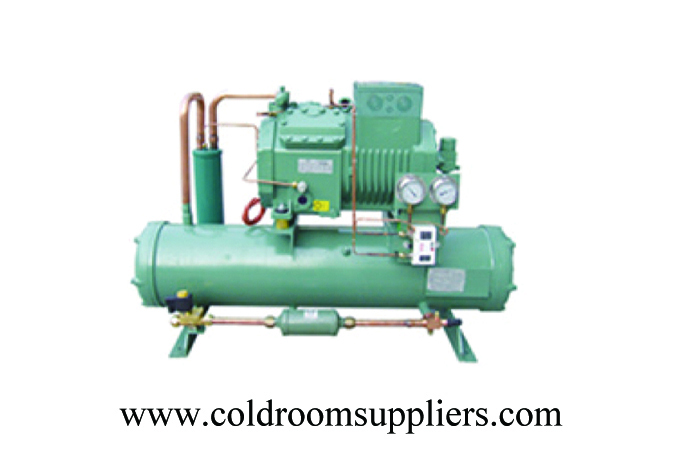Knowing what each piece of equipment does, and what to look for when discussing your project with sellers and consultants, will help you not get the headache of making the wrong choice. That’s why it’s in your interest to know exactly what a condensing unit does.
The economic impact of condensing units
A condensing unit is a great saviour for your refrigeration system: recovering the refrigerant gas, prevents this substance from having to be consumed and used up every time you want your product to cool.
Condensers for different applications
Condensers can be manufactured in a wide range of designs and they come in a variety of sizes, depending on their application. For example, refrigerators use condensers to remove heat extracted from the inside of the unit and send it outside.

Condensers are used in air conditioning, chemical processes such as distillation, steam power stations and other heat exchange systems. The use of chilled water or ambient air is common in many condensers because of its dispensability and convenience for human geographical locations.
What is a condenser unit?
Condenser units commonly used in HVACR central systems (heating, ventilation, air conditioning and refrigeration) generally consist of
A heat exchange sector: to cool and condense the vapours coming from the liquid refrigerant.
A compressor: to increase the pressure and movement of the refrigerant.
A breather: to cool the refrigerant inside by moving said outdoor air through the exchanger.
Location of condenser units
Some condenser units are located outside the building they are trying to cool and their pipes are connected from the unit to the building: one for the incoming refrigerant vapour and the other for the liquid refrigerant flowing out of the unit. Of course, the compressor and ventilator inside the unit require a power supply.
Three types of the condenser unit
From a basic point of view, there are three main types of condenser units, divided according to the mechanism they use to perform their duties.
Air-cooled condenser units
If the condenser is located outside the unit, an air-cooled condenser may be a good choice for easy design placement. This type of condenser pushes the heat outside and is very simple to install. The most common use of this type of condenser is for residential air conditioning, which means that their use is related to comfort. A great feature of this type of condenser is that it is very easy to clean. Preventive maintenance is highly recommended as fouling can cause serious problems with condenser performance.
Water-cooled condenser units
Even though this type of condenser implies a higher investment, they are the most efficient and require regular maintenance.
From a thermodynamic point of view, it is also common to use auxiliary systems to disperse the heat, such as cooling towers to hold the water. To prevent corrosion, water-cooled condensers require a consistent repositioning of the water supply, as well as a purification system with water treatment.
Depending on the application, you can choose from a range of systems commonly known as chillers, with helmet tube systems being the most prominent. They are all essentially designed to produce the same result, but each in its own way.
Steam cooled condenser units
Although this is the least popular choice, vapour cooled condensers can be used inside or outside of buildings and they offer excellent operational advantages under normal conditions when operating at lower condensing temperatures. Typically this is used for large air-conditioned commercial units, storage units with large amounts of cooling or high movement rates.
If you want to get more information about the best condenser units, welcome to contact us today or request a quote.
